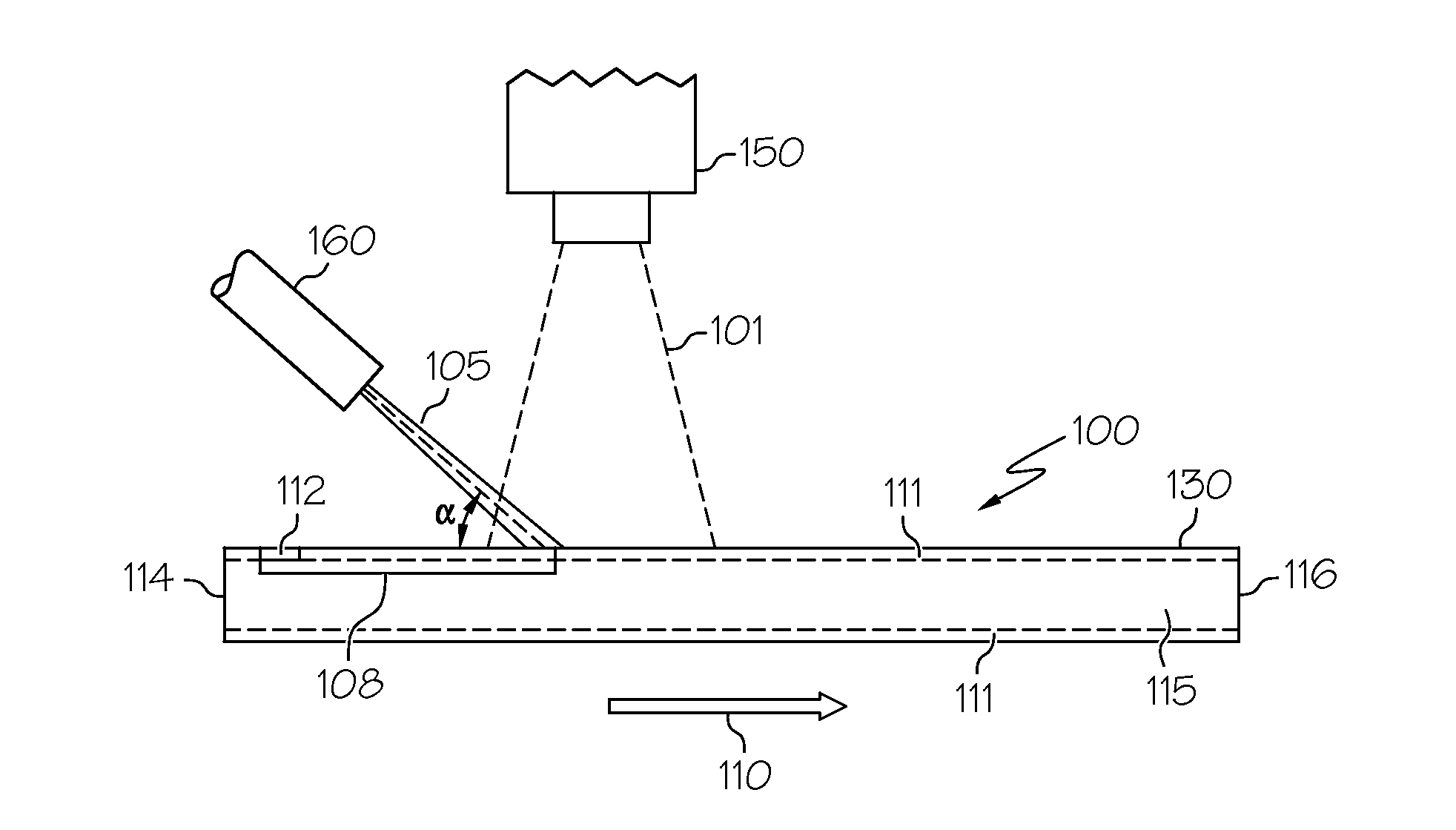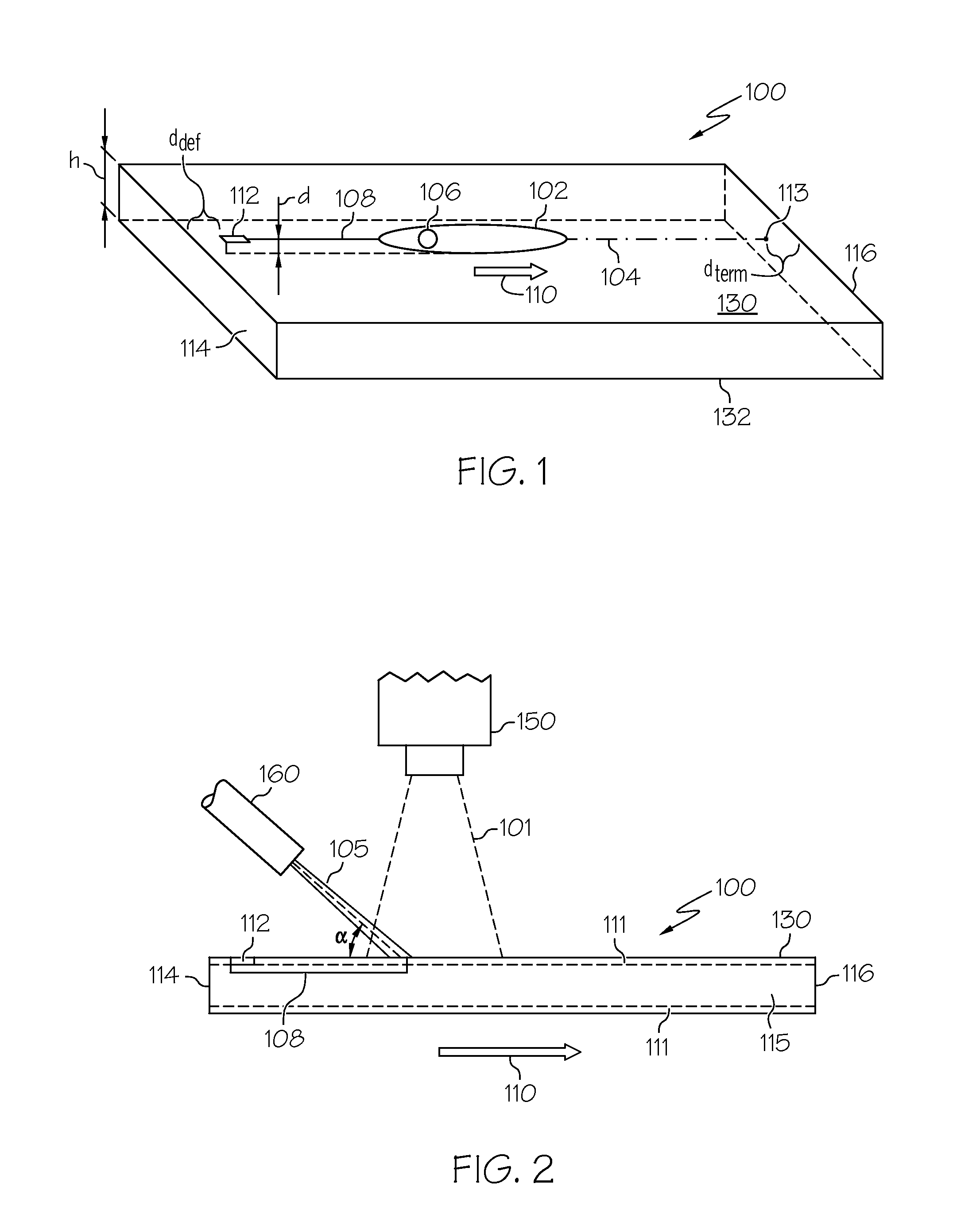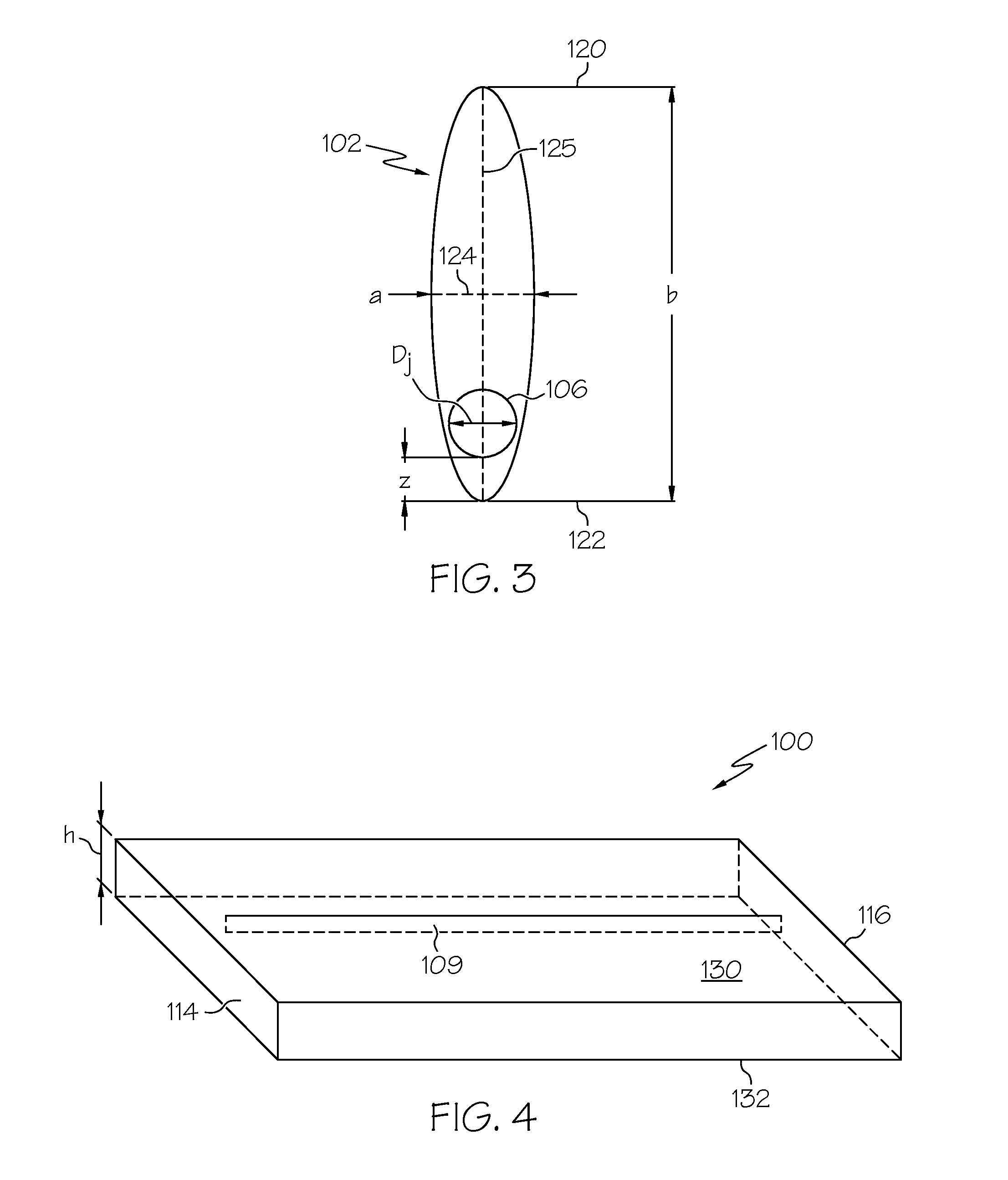Methods for laser scribing and separating glass substrates
a technology of laser scribing and glass substrate, which is applied in the direction of glass making apparatus, laser beam welding apparatus, manufacturing tools, etc., can solve the problems of poor edge characteristics, uncontrollable full-body separation rather than the formation of a scribe line,
- Summary
- Abstract
- Description
- Claims
- Application Information
AI Technical Summary
Benefits of technology
Problems solved by technology
Method used
Image
Examples
example 1
[0048]A fusion drawn, ion-exchanged alkali aluminosilicate glass substrate having a center tension of about 18 MPa, a compressive stress of about 750 MPa, and a depth of layer of about 21 μm was separated by the following method. A defect was created mechanically and was offset approximately 6 mm from the first edge of the glass substrate. Metal strips were used as first and second laser shields to shield the first and second edges of the glass substrate where the laser and water jet passes. The shielded regions extended approximately 6 mm from the respective edges. The laser and water jet were operated at all times as the glass substrate was translated at a speed of about 140 mm / s. The glass did not separate and a scribe line was successfully formed between the shielded regions (i.e., between the defect and a termination location).
example 2
[0049]A fusion drawn, ion-exchanged alkali aluminosilicate glass substrate having the same properties as Example 1 was separated by the following method. A first defect was created by mechanical means on a first edge of the glass substrate. The first defect was offset approximately 8 mm from the first edge. A second defect was created by mechanical means on a second edge of the glass substrate that was adjacent to the first edge. The second defect was offset approximately 8 mm from the second edge. The same process as described in Example 1 was used to generate two separate scribe lines that intersected at a 90° angle. The scribe lines extended between the shielded regions but did not extend to the edges of the glass substrate. The glass did not separate and scribe lines were successfully formed.
example 3
[0050]A fusion drawn, ion-exchanged alkali aluminosilicate glass substrate having a center tension of about 28 MPa, a compressive stress of about 725 MPa and a depth of layer of about 40 μm was separated by the following method. Two pieces of metal were used as first and second laser shields to shield the glass on both edges of the glass substrate where the laser and water jet passes. The distances of the shielded glass (i.e., shielded regions) to the edges were approximately 6 mm. The laser and water jet were operated at all times as the glass substrate was translated at a speed of about 105 mm / s. A successful laser scribing process was observed. The scribe line extended between the two shielded regions and withstood handling after the scribing process.
[0051]It should now be understood that the methods described herein may be used to separate glass substrates such as glass substrates made from borosilicate glasses, as well as glass substrates formed from aluminosilicate glasses inc...
PUM
 Login to View More
Login to View More Abstract
Description
Claims
Application Information
 Login to View More
Login to View More - R&D
- Intellectual Property
- Life Sciences
- Materials
- Tech Scout
- Unparalleled Data Quality
- Higher Quality Content
- 60% Fewer Hallucinations
Browse by: Latest US Patents, China's latest patents, Technical Efficacy Thesaurus, Application Domain, Technology Topic, Popular Technical Reports.
© 2025 PatSnap. All rights reserved.Legal|Privacy policy|Modern Slavery Act Transparency Statement|Sitemap|About US| Contact US: help@patsnap.com



